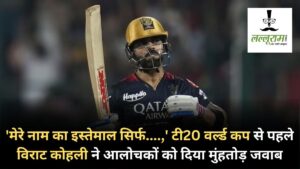Hardik’s hips don’t lie: Minimum motion, most energy cater to six-mania
3 min readIt’s a stance and approach created for (and by) the six-lust of our occasions. Hardik Pandya opens up his stance, stands on the off-stump line, toes broad aside, and simply leans ahead or again along with his knee-flex, driving via his hips with out a stride – a minimalistic explosion. As if he has stripped hitting to its essence: steadiness, eyesight, quick arms, and hips.
It’s not readily acknowledged however Pandya is somebody who places numerous thought into his batting. “I go really deep in my batting. I really like to know the factors which I am working for. [For me,] maintaining shape is more important. I keep working on my technique,” he has mentioned. It’s a press release that’s backed with anecdotal proof from his coach Jitendra Singh, who has spent hours honing and watching Pandya practise this open-stance whack over midwicket.
It’s Pandya’s hips that his coach obsesses about. Hips don’t lie, as they are saying. “Hardik turns his back leg from his hip, and not from his knee when he is driving through the line.” This permits unimpeded motion for the bat-swing and higher pace to scythe via the road. “When it’s short, he will press down on that front leg, and load up on the back leg, sort of twist and turn it quickly and with his already open stance, it allows a free swing of the bat for the pull. He has trained for hours, for months, and now it’s all a natural reactionary movement. So, now for the main, I look for the head position, the feet and the hands,” Singh instructed this newspaper.
Pandya’s steadiness part has a number of substances – the knee-flex that enables him to spring off from the balls of his toes, the next postural-sway that enables a easy switch of weight and makes toes motion nearly redundant, and the related hip-turn that powers the bat to and thru the contact zone. There are not any pointless tiny foot actions that may upset steadiness, simply the sway to shift the burden. An pointless shuffle can creep in for some batsmen trying this shot or the arms can transfer wider than excellent for the downward bat-swing. But Pandya’s batting is devoid of those further appendages.
It was the necessity to create angles as a batsman to not simply goal areas to hit however to neutralise a complete array of deliveries, says the coach. “With his batting, he realised the need to create angles. He also stands deep in the crease with that guard – he told me that he doesn’t have to worry about yorkers and bouncers. The logic in this stance is that it’s not so easy now for bowlers to get that yorker at the base of the stumps – as he is almost by the stumps. With bouncers, because he is so back, he gets extra time to cut and pull.”
A easy shot retains unravelling hidden layers. The coach explains additional concerning the position of the open shoulders. Since the shoulders are already a contact open, a batsman can keep away from the reflex-jerk that may invariably occur in a extra standard stance to a bouncer which upsets the stillness of the pinnacle. “The head position is key,” Singh says, “Both eyes are level, which means the head isn’t tilted and he watches the ball release with his right eye.” That proper eye desire means the shoulder will face the non-striker, along with his hips additionally barely open.
Couple of years in the past, the coach felt that Pandya’s backside hand was taking up a bit an excessive amount of. “That affects the angles and areas he can access. So, we got his top hand back into the grip more. Little stuff like that. He always looks to hit through the line.”






